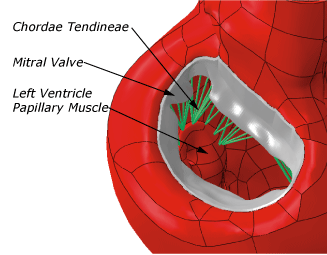Chordae Tendineae | ||
| ||
In the figure below, the mesh uses truss elements (T3D2) for the
chordae. The mechanical constitutive behavior is hyperelastic with a Marlow
form of strain energy potential. The uniaxial test data used as input into the
constitutive law was derived from
Kunzelman and Cochran. The chordae are
coupled to the ventricular papillary muscles and mitral/tricuspid valves via
tie constraints.
